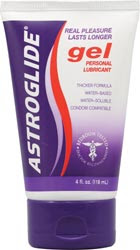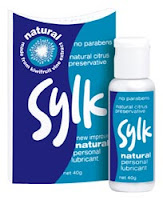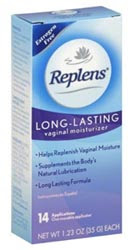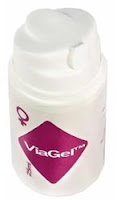A month ago, the FDA approved the first pill meant to combat sexual dysfunction resulting from menopause. It's called Osphena, and it purports to cure dyspareunia (pain during sex) by augmenting the declining estrogen levels responsible for "vulvar and vaginal atrophy," a terrifying term that implies that menopause causes your body to decay and form a rotting flesh-coffin around your softly beating woman's heart. Shinogi, the pharmaceutical company responsible for Osphena, claims that more than half of the 64 million U.S. women who have been through menopause would benefit from the drug. While it's nice to see someone recognizing that woman over 50 do, in fact, have and enjoy sex, and while it's great that someone is addressing sexual dysfunction in women, there are several things about Osphena that are in danger of being overblown or misrepresented entirely.
In an article in Newsweek, Jennifer Block notes that there are three significant questions that must be addressed before we hail Osphena as a major milestone in women's health:
First about whether this is a real disorder affecting a large percentage of American women. Second about how Osphena was approved. And third about whether Osphena, which mimics estrogen and has similar known downsides, may also be a back-door, off-label replacement for “hormone replacement therapy,” which was discredited a decade ago.
According to Loren Wissner Greene, an ob-gyn and bioethicist at NYU, although there are women who suffer from dyspareunia, Osphena is "propagandizing" female sexual dysfunction and propagating inaccurate information. "Vulvo-vaginal atrophy" refers to the thinning of skin and muscle — a process which is not at all specific to the vulva, as it also causes wrinkles and grey hair — and all women experience it to some extent. She quotes an estimate that only 10 percent of menopausal women need medical attention, which is far less than the 60 percent that Shinogi claims.
Furthermore, the drug's approval process has attracted criticism. The two 12-week trails that resulted in FDA approval were funded by the drug's developer (while this isn't rare in drug development, it's worth noting). The lackluster results are as follows:
While investigators report a statistically significant improvement for women’s “most bothersome symptom,” at 12 weeks that difference was less than half a percent between the women taking the drug and those on placebo. “You can make it sound very statistically significant, as they’ve done,” [Alan Cassels, a drug policy expert at the University of Victoria] said. “But how does that translate into something meaningful for a person’s life?”
Barbara Mintzes, who studies drug marketing at the University of British Columbia... notes that while roughly 14 percent of women (over placebo) had an alleviation of symptoms, a similar percentage of women also experienced an adverse event, like an infection... “These are very disappointing results—no one wants to take a medicine that is equally likely to make them worse as to make them better.”
In clinical trials, women taking Osphena had twice the rate of urinary tract infections, three times the rate of hot flashes, and 14 times the rate of yeast infections.
There are more severe side effects than a 14-fold chance of getting a yeast infection. Some critics claim that Osphena is simply a rebranded form of "hormone replacement therapy." This practice, which began in the 1960s, involved women ingesting estrogen. It fell out of favor in the late 70s after being linked to an eightfold increase in endometrial cancer, and then regained popularity when estrogen pills began to be sold in combination with progestin, which protects the endometrium. According to a 2002 study by the National Institute of Health, hormone therapy is still unsafe, even when the estrogen is supplemented with progestin: it's known to lead to an increased risk of heart attack, breast cancer, and stroke. Although Osphena is a SERM (selective estrogen-receptor modulator) that "results in the activation of estrogenic pathways in some tissues" — so, not exactly a traditional estrogen/progesterone pill — it, too, has an associated risk of endometrial cancer and stroke.
So, while it's great on some level that medical professionals are taking female sexual dysfunction seriously, there's a clear downside to overstating the need for Osphena and to over-prescribing it to women. It's important to note that there are a variety of less risky treatments available to women: firstly, having sex is a preserver of good function, and women also have at their disposal lubricants, physical therapy, and topical estrogen creams, which are less likely to affect their internal functioning than a pill. The goal of any treatment like Osphena should be to sexual health and function in post-menopausal women, not to increase revenue for drug companies.
http://jezebel.com/is-the-fda-approved-female-viagra-pill-actually-effec-486113512
In an article in Newsweek, Jennifer Block notes that there are three significant questions that must be addressed before we hail Osphena as a major milestone in women's health:
First about whether this is a real disorder affecting a large percentage of American women. Second about how Osphena was approved. And third about whether Osphena, which mimics estrogen and has similar known downsides, may also be a back-door, off-label replacement for “hormone replacement therapy,” which was discredited a decade ago.
According to Loren Wissner Greene, an ob-gyn and bioethicist at NYU, although there are women who suffer from dyspareunia, Osphena is "propagandizing" female sexual dysfunction and propagating inaccurate information. "Vulvo-vaginal atrophy" refers to the thinning of skin and muscle — a process which is not at all specific to the vulva, as it also causes wrinkles and grey hair — and all women experience it to some extent. She quotes an estimate that only 10 percent of menopausal women need medical attention, which is far less than the 60 percent that Shinogi claims.
Furthermore, the drug's approval process has attracted criticism. The two 12-week trails that resulted in FDA approval were funded by the drug's developer (while this isn't rare in drug development, it's worth noting). The lackluster results are as follows:
While investigators report a statistically significant improvement for women’s “most bothersome symptom,” at 12 weeks that difference was less than half a percent between the women taking the drug and those on placebo. “You can make it sound very statistically significant, as they’ve done,” [Alan Cassels, a drug policy expert at the University of Victoria] said. “But how does that translate into something meaningful for a person’s life?”
Barbara Mintzes, who studies drug marketing at the University of British Columbia... notes that while roughly 14 percent of women (over placebo) had an alleviation of symptoms, a similar percentage of women also experienced an adverse event, like an infection... “These are very disappointing results—no one wants to take a medicine that is equally likely to make them worse as to make them better.”
In clinical trials, women taking Osphena had twice the rate of urinary tract infections, three times the rate of hot flashes, and 14 times the rate of yeast infections.
There are more severe side effects than a 14-fold chance of getting a yeast infection. Some critics claim that Osphena is simply a rebranded form of "hormone replacement therapy." This practice, which began in the 1960s, involved women ingesting estrogen. It fell out of favor in the late 70s after being linked to an eightfold increase in endometrial cancer, and then regained popularity when estrogen pills began to be sold in combination with progestin, which protects the endometrium. According to a 2002 study by the National Institute of Health, hormone therapy is still unsafe, even when the estrogen is supplemented with progestin: it's known to lead to an increased risk of heart attack, breast cancer, and stroke. Although Osphena is a SERM (selective estrogen-receptor modulator) that "results in the activation of estrogenic pathways in some tissues" — so, not exactly a traditional estrogen/progesterone pill — it, too, has an associated risk of endometrial cancer and stroke.
So, while it's great on some level that medical professionals are taking female sexual dysfunction seriously, there's a clear downside to overstating the need for Osphena and to over-prescribing it to women. It's important to note that there are a variety of less risky treatments available to women: firstly, having sex is a preserver of good function, and women also have at their disposal lubricants, physical therapy, and topical estrogen creams, which are less likely to affect their internal functioning than a pill. The goal of any treatment like Osphena should be to sexual health and function in post-menopausal women, not to increase revenue for drug companies.
http://jezebel.com/is-the-fda-approved-female-viagra-pill-actually-effec-486113512



























